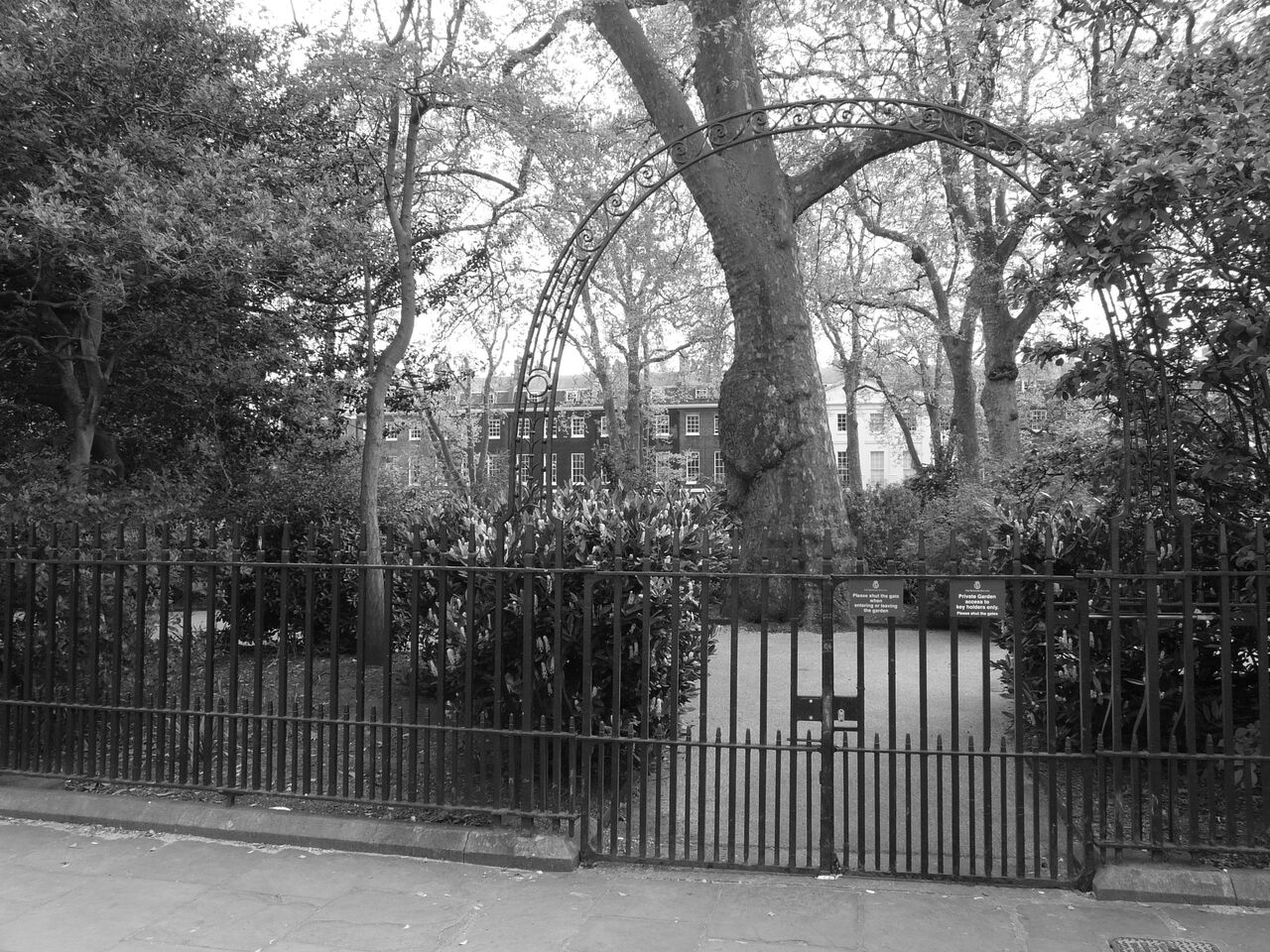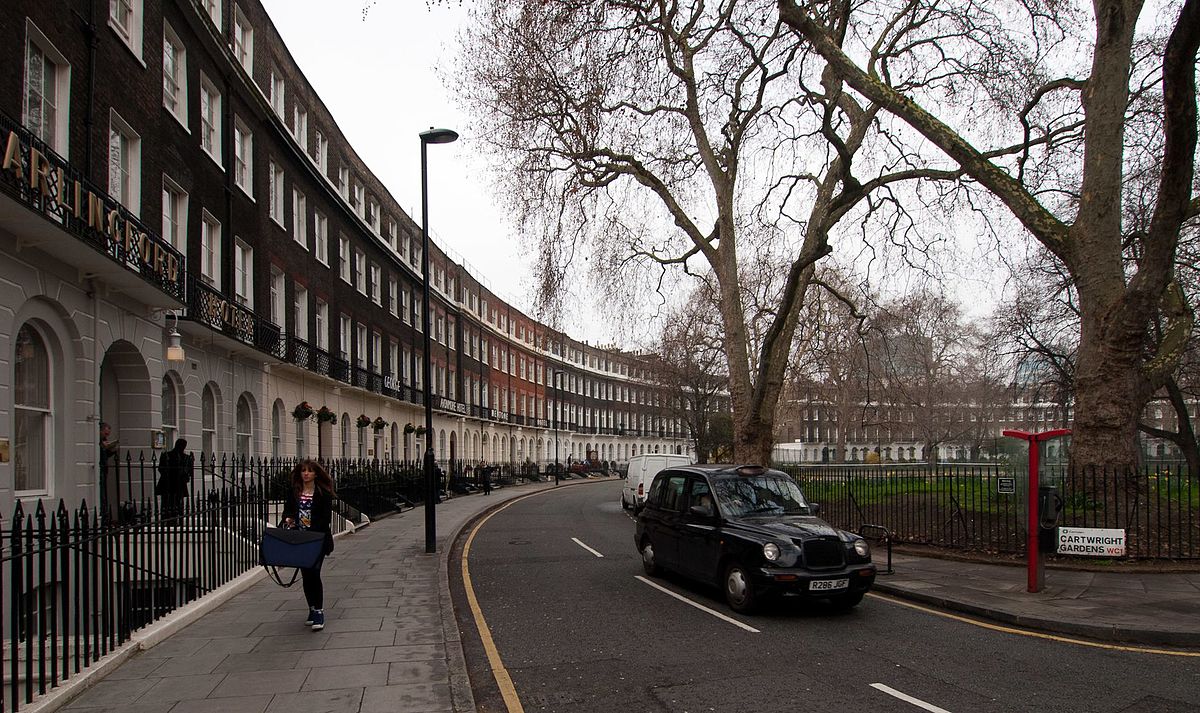
Such is the influence wielded within the popular consciousness by London’s Underground map, Bloomsbury being one of those celebrated London localities which, being untethered to the name of any tube station, can prove peculiarly hard to locate.
Actually, the precise cartographical limits that define where Bloomsbury begins and ends have always been a matter of dispute. For the purposes of the straightforwardness of his dimensions, this book goes along with Edward Walford’s view, in 1878, that ‘the district now known under the general name of Bloomsbury lies on the north side of Holborn, stretching away as far as the Euston Road, and is bounded to the east and west respectively by Gray’s Inn Road and Tottenham Court Road.
These major roads, which form a fairly equal parallelogram, circumscribe Bloomsbury, each of them acting as boundaries that demarcate the place from other neighbourhoods that also have distinct histories and characters. Between the west and the east of the central core of the city, the neighbourhood was for much of its modern history defined as a kind of social threshold between London’s rich and poor.
LOCAL ADVERTISING

Meanwhile at its southern border of New Oxford Street, the city’s intellectual hub rubbed up against not only the slums of St Giles, but also the theatreland of Covent Garden. According to Wilkie Collins, in 1883, Bloomsbury was ‘alike out of the way of fashion and business; and… yet within easy reach of the one and the other’. Bloomsbury’s identity – betwixt and between – has always been produced out of its dynamic relation to its neighbours.
In that same period, however, Bloomsbury gradually established itself as a different kind of centre within a modernising metropolis, one defined by intellectual endeavour and middle-class professionalism. By the early twentieth century, when both the ‘Bloomsbury Group’ and T. S. Eliot, as editor at Faber, had become associated with the area, Bloomsbury was known as a base for a kind of literary and artistic establishment, which set itself in opposition to what they perceived as the dominant tyranny within modernity – the mass market.
Bloomsbury’s history is characterised, then, by its curious relationship to the establishment, the area having transformed itself from a suburb to the centre of writing and thinking in the Anglophone world. Other books about Bloomsbury tell other stories in other ways. As do the streets themselves. Beyond the blue plaques that proliferate continually in this part of town, any walk through this locality will open up questions and begin to unearth aspects of the place I have here neglected.
This is an edited extract from Matthew Ingleby’s Bloomsbury (British Library), £10, available here.
Top 3 hidden corners in Bloomsbury
1. Cartwright Gardens

As ‘Burton Crescent’, the address features in both Anthony Trollope’s The Small House at Allington (1864) and George Gissing’s The Nether World (1889), in each as a site of seedy boarding houses. Ironically, meanwhile, barely a decade after gaining the new moniker, the bestselling ‘Golden Age’ detective writer J. S. Fletcher set his The Cartwright Gardens Mystery (1924) there. Now, the street’s dodgy past has been largely forgotten, and it is the location of some very fancy students’ halls of residence, while the gardens themselves host four well-used tennis courts.
2. The Boot

It appears in Charles Dickens’s historical novel, Barnaby Rudge (1841) as a ‘lone house of public entertainment, situated in the fields at the back of the Foundling Hospital; a very solitary spot at that period, and quite deserted after dark.’ In Dickens’s work of fiction, this ‘solitary spot’ serves as the rioters’ headquarters in the Gordon Riots, the anti-Catholic insurrection that erupted in Bloomsbury and the rest of the capital in 1780.
3. The British Museum

Between 2007 and 2013, the reading room hosted a series of blockbuster exhibitions, but all the original features of the library were kept entirely out of sight in this period, including the extraordinary dome, which was the largest to grace a secular building upon construction in 1857.
Now this room is closed to the public entirely, its fate undecided. Given the international importance of such a site to the production ideas, we can only hope the Museum opens its central space up to visitors again before long, so tourists can come to see the seats where writers such as Karl Marx penned their world-changing writings.


